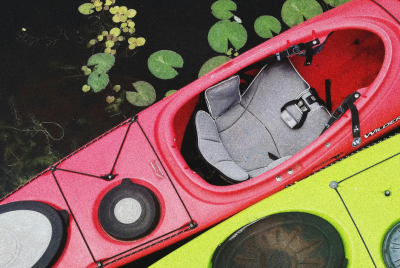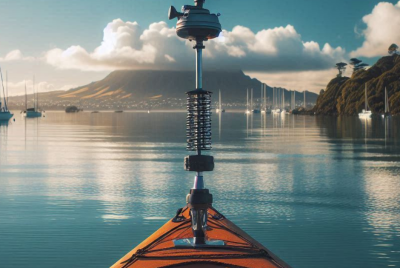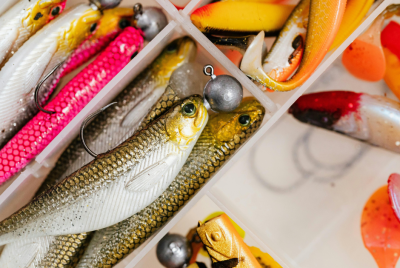Kayak Anchors : Techniques and Safety Considerations
Factors to Consider When Choosing an Anchor
Choosing the right anchor for your kayak is crucial for a safe and enjoyable experience on the water. Here are some key factors to keep in mind:
1. Kayak Size and Weight
The size and weight of your kayak play a significant role in determining the type of anchor you need. Larger and heavier kayaks require anchors with more holding power to keep them in place, while smaller kayaks may be fine with lighter anchors.
2. Water Conditions
Consider the water conditions where you’ll be kayaking. If you frequent calm, shallow waters, a smaller anchor may suffice. However, if you often encounter strong currents or windy conditions, you’ll need a more robust anchor to ensure your kayak stays put.
3. Anchor Material and Design
Pay attention to the material and design of the anchor. Stainless steel anchors are durable and resistant to corrosion, making them suitable for saltwater kayaking. Additionally, consider the anchor’s design, such as folding anchors for compact storage or grapnel anchors for versatility in different bottom types.
5 Key Types of Kayak Anchors

1. Folding Anchors
Folding anchors are compact and easy to store. They usually have four flukes that fold for storage and deployment. These anchors are suitable for kayaks due to their lightweight design and versatility.
2. Grapnel Anchors
Grapnel anchors feature multiple flukes attached to a central shank. They are effective in various bottom types, including rocks and weeds. However, they can be bulkier than folding anchors and may require more storage space.
3. Mushroom Anchors
Mushroom anchors have a wide, mushroom-shaped head and a heavy base. They work well in soft bottoms like mud or sand, providing reliable holding power. While they are efficient, their size and weight may not be ideal for all kayak setups.
4. Folding Anchors
When it comes to kayak anchors, folding anchors are my top pick. These anchors are compact and easy to store, making them perfect for kayakers like me who value convenience. With their four flukes that fold for storage and deployment, they’re a breeze to handle on the water.
5. Grapnel Anchors
Grapnel anchors are another popular choice among kayak enthusiasts. These anchors feature multiple flukes attached to a central shank, providing excellent holding power in various bottom types. While they may be bulkier than folding anchors, their versatility makes them a reliable option for different kayaking adventures.
3 Tips for Properly Anchoring a Kayak
Anchoring your kayak properly is essential for a safe and enjoyable experience on the water. Here are some tips to help you anchor your kayak like a pro:
1. Choosing the Right Location
Before dropping anchor, carefully choose your location. Look for a spot with calm waters and avoid areas with strong currents or obstacles. Additionally, consider the depth of the water to ensure your anchor will reach the bottom securely.
2. Deploying and Retrieving the Anchor Safely
When deploying your anchor, lower it slowly to the bottom while keeping a firm grip on the anchor line. Once it’s secured, give it a gentle tug to ensure it’s holding properly. When retrieving the anchor, pull it up steadily to avoid jerking motions that could destabilize your kayak. Ensure stability before launching the kayak.
3. Securing the Anchor Line
After anchoring your kayak, be sure to secure the anchor line properly. Use cleats or attachment points on your kayak to prevent the line from tangling or getting caught on obstacles. Additionally, consider using a buoy or float to mark the location of your anchor for easy retrieval later on.
Reviews and Ratings of Popular Kayak Anchors
When it comes to choosing the right kayak anchor, reviews and ratings can be invaluable. Here’s how I evaluate popular kayak anchors:
Customer Reviews and Ratings
I always start by reading customer reviews and checking the ratings of different kayak anchors. Pay attention to what other kayakers have to say about the anchors’ performance, durability, and ease of use. Look for patterns in the feedback to get a sense of the anchor’s overall quality.
Personal Recommendations
In addition to online reviews, I also seek out personal recommendations from fellow kayakers. Whether it’s from friends, online forums, or social media groups, hearing about real-life experiences with specific anchors can help me make an informed decision. Don’t hesitate to ask for advice or suggestions from those who have firsthand experience with the anchors you’re considering.
Conclusion
Choosing the right anchor for kayaking is essential for both safety and convenience on the water. A suitable anchor provides stability, keeping your kayak in place even in windy or turbulent conditions. By investing in a quality anchor and following proper anchoring techniques, you can enjoy your kayaking adventures with peace of mind, knowing that you’re prepared for whatever the water may bring. So, remember to select an anchor that suits your kayak and the conditions you’ll encounter, and always anchor responsibly for a smooth and enjoyable experience.
FAQs : Kayak Achors
Here are some frequently asked questions about kayak anchors:
How do I know what size anchor to use for my kayak?
When choosing an anchor size, consider the weight and size of your kayak. Larger and heavier kayaks will require anchors with more holding power, while smaller kayaks may be fine with lighter anchors. It’s also essential to factor in the water conditions you’ll be kayaking in.
Can I use a regular boat anchor for my kayak?
While it’s technically possible to use a regular boat anchor for a kayak, it may not be the most practical option. Boat anchors are typically heavier and bulkier, making them less suitable for kayaks, which have limited space and weight capacity. It’s best to invest in a kayak-specific anchor that is lightweight and compact.
What should I do if my anchor gets stuck?
If your anchor gets stuck, remain calm and avoid pulling too hard, as this can cause damage to your kayak or anchor line. Try gently rocking your kayak back and forth to loosen the anchor, or paddle around it to release the tension. If all else fails, you may need to cut the anchor line and retrieve the anchor later using a grappling hook or dive gear.
Is it necessary to use an anchor when kayaking in calm waters?
While it may not be strictly necessary to use an anchor in calm waters, it can still be beneficial. An anchor can help keep your kayak in place, allowing you to fish, take photos, or simply enjoy the scenery without drifting. Additionally, having an anchor on board provides peace of mind in case the weather or water conditions change suddenly.
Are there any DIY kayak anchor solutions?
Yes, there are several DIY kayak anchor solutions you can try if you’re looking to save money or get creative. Some popular options include using a heavy-duty bag filled with rocks or sand as an anchor, repurposing a small boat anchor, or making a homemade anchor using PVC pipes and concrete. Just be sure to test your DIY anchor in a safe environment before relying on it during your kayaking adventures.
*We may earn a commission from purchases made through our links, at no cost to you. This does not affect our product recommendations. Please see our disclosure to learn more.




